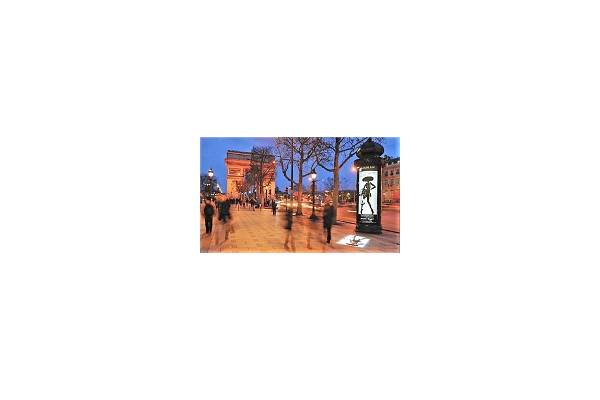Just as Wallace fountains or Guimard aedicules help to define the Paris we know and love, Morris columns also form an integral part of this great city’s emblematic and unique urban landscape.
These columns originate from Berlin, where flyposting was at one time known to pose a problem. It was in 1845 that German printer-publisher and inventor Ersnt Litfaß found a way to curb the excessive amounts of flyposting around the city. Litfaß columns were soon taken over by Gabriel Morris, another printer who specialized in billposting on the numerous Parisian spectacles of this era. The first 100 Morris columns were installed around Paris in 1855.
These cylindrical columns can hold almost four square meters of Parisian cultural offers and advertisements. The structures are iron cast in green, allowing them to easily blend into the Parisian landscape. The whole of urban “furniture” thereby adopts this hue.
Typical of the eclectic style of the 19th century, this column is designed with a hexagonal canopy and ornamented with six lion noses at the angle. A dome adorned with an arrow and acanthus leaves rests atop the whole structure.
It is worth noting that the interior of the column is hollow, allowing for storage of city maintenance equipment.
Supported by the police commissioner of Paris, The Morris column project was so welcomed that about ten of these columns were installed on the great boulevard of the city alone. Between 1868 and 1870, approximately 451 Morris Columns in total were installed in Paris. Today, more than 500 exist.

